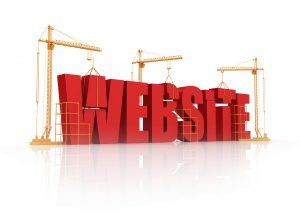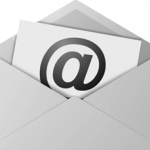 Business owners must be honest with themselves. Believe it or not, it is 2014. An excellent, informative web page is a necessary component to any striving business. Let’s uncover a few tips to attain this goal!
Business owners must be honest with themselves. Believe it or not, it is 2014. An excellent, informative web page is a necessary component to any striving business. Let’s uncover a few tips to attain this goal!
First Impressions
The first thing to do when creating a web page is to determine your audience. A web page directed toward educators and professionals would look very different from a website directed to teenagers or children! Next, you must determine your purpose. Why should people visit this web page? Equipped with these details, business owners can then begin to plan what their web page will look like. Remember, first impressions are important! You want something that will grab your viewer’s attention and keep them on the site. Perhaps you can introduce your web page with a large photo or graphic that says something about the company or organization, along with a header and a brief description.
1. Readability
After you grab your reader’s attention, you want to keep their attention. Rather than scaring away visitors, you want to compel them to continue reading or browsing your website by utilizing an easy to understand layout. The most important information should be readily available on the website. Readers should be able to find all of the information they need. What many companies do not understand is that even the typography choice plays a huge role in readability. The design-based Smashing Magazine states, “Readability is one of the more important aspects of Web design usability. Readable text affects how users process the information in the content. Poor readability scares readers away from the content. On the other hand, done correctly, readability allows users to efficiently read and take in the information in the text. You want users to be able to read your content and absorb it easily” (Cronin). Company owners looking to promote their business should ensure their web page is readable for guests. This will enable them to understand the information you are delivering.
2. Content
Even before you begin to decide your web content, you must first decide your URL. A URL that is not flooded with vague phrases and numbers will be easily remembered, so visitors will have no difficulty returning. Address all questions that readers might have, and answer them within the website. In fact, businesses should do their best to anticipate potential questions before they arise. By relaying that information on the web page, companies will avoid frustrated web page users.
Information
An effective web page should direct visitors to key information. As you begin to write your web content, only use vital information. In fact, “if it can function without it, take it out!” (Fremont). By avoiding mediocre material, companies will save users precious time. Advance your website with informative, creative, and unique content that sets your brand apart from the others! It is likely that, with more interesting content and strong writing, your web page will gain more attention and credibility from your viewers.
3. Navigation
You want your users to be able to navigate around your page easily and get to where they need to quickly. The more they become frustrated, the more quickly they will close the page. A user-friendly website should feature clear links. Similar links should be grouped together.
Modern Icons Enhance Clarity
Even better, a great web page can incorporate icons. Think about the interfaces of all of the most up to date operating systems. For example, Apple’s iOS7 and Windows 8 both feature clean, easily understood icons. Good design is key to a great website, in our ever-evolving digital world. Clean design and looks will draw viewers in. As you can see websites arranged in simple, colorful icons are very user-friendly.
4. Design and Graphics
Good design entails that your website is not overloaded with information. You want your website to be modern and up-to-date, and you will soon learn that simplicity is crucial to modern design. The web page should clearly display the company’s logo or name so that visitors immediately recognize the brand behind the page. It is a great idea to incorporate an eye-catching graphic to pull guests in, whether it is an informative informative or just something to grab their attention and hold their interest.
Color
When designing your web page, it is important to recall that “not everyone has great eyesight so the easier it is to read the content on your site and the more aesthetically pleasing the visuals are, the more likely your visitor will spend more time on your page. Color has an interesting way of instilling feelings within people. Blue and green, for example are cool colors and tend to create a feeling of calmness, whereas red is a more edgy color” (Fremont). In that case, the colors of your web page should emphasize the overall feel you are trying to instill into your guests. In fact, A Graphic Design Project From Start to Finish reveals what each color does to the human brain and body. In the human brain, orange represents joy, cheer, and the warmth of summer; purple reduces anguish, phobias and fear; and red is the color of vitality and action (Garcia). If you are selling hot sauce, a red website might do the trick. If you are advertising a local pool, orange is a great choice to bring out feelings of joy and memories of summertime to your viewers.
5. Credibility
Honestly, no one wants to visit a web page that looks unprofessional. Visitors want to discover a web page that is user-friendly and trustworthy. Remember, your website represents your company. Forbes reminds us, “Simply put, if we don’t deem a source trustworthy, we won’t pay any attention” (Hall). When determining the credibility of a website, Hall suggests that viewers consider the original source, check whether the author used credible sources, and to check if there are errors. These, among other tips, help readers decide whether or not they trust a particular web page.
Staying Up to Date
Feel free to add photos of the CEO and/or employees to the web page to reinforce the familiarity for visitors. Make sure you keep up to date on all of the proper licenses and certification. There is nothing more unsettling than having a window pop up that says “this website’s certification has expired” or anything similar. Most guests will not even visit the web page when their computer warns them of this. Hall goes on to give business owners pointers to create credible web page content, and reminds you to “respect your readers’ intelligence by providing truthful, honest content. They’ll reward you for it” (Hall). Visitors that trust your web page will reward you by returning to the page, hiring you for services, buying your product, and recommending you to others. Now, isn’t it worth it?
Read some more tips here!
Also, check out Forbes’ list of top web design mistakes small businesses make!
Works Cited
“5 Key Aspects of a Good Website.” Fremont College. Fremont College, n.d. Web. 26 Mar. 2014.
Cronin, Matt. “Smashing Magazine.” 10 Principles For Readable Web Typography. Smashing Magazine, 18 Mar. 2009. Web. 26 Mar. 2014.
Hall, John. “How To Do A Credibility Check So You Don’t Get Duped Like Kim Jong-un.” Forbes. Forbes Magazine, 17 Nov. 2013. Web. 26 Mar. 2014.
Salinas, and Garcia. A Graphic Design Project from Start to Finish. Barcelona, Spain: Index, 2010. Print.



